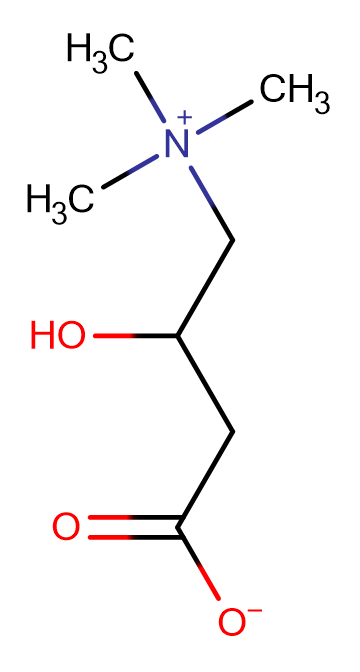
DL-Carnitine
CAS No. 461-06-3
DL-Carnitine( —— )
Catalog No. M14553 CAS No. 461-06-3
Constituent of striated muscle and liver. It is used therapeutically to stimulate gastric and pancreatic secretions and in the treatment of hyperlipoproteinemias.
Purity : >98% (HPLC)
 COA
COA
 Datasheet
Datasheet
 HNMR
HNMR
 HPLC
HPLC
 MSDS
MSDS
 Handing Instructions
Handing Instructions
| Size | Price / USD | Stock | Quantity |
| 5MG | 34 | In Stock |


|
| 10MG | 45 | In Stock |


|
| 25MG | 41 | In Stock |


|
| 50MG | 59 | In Stock |


|
| 100MG | 85 | In Stock |


|
| 200MG | 124 | In Stock |


|
| 500MG | Get Quote | In Stock |


|
| 1G | Get Quote | In Stock |


|
Biological Information
-
Product NameDL-Carnitine
-
NoteResearch use only, not for human use.
-
Brief DescriptionConstituent of striated muscle and liver. It is used therapeutically to stimulate gastric and pancreatic secretions and in the treatment of hyperlipoproteinemias.
-
DescriptionConstituent of striated muscle and liver. It is used therapeutically to stimulate gastric and pancreatic secretions and in the treatment of hyperlipoproteinemias.
-
In Vitro——
-
In Vivo——
-
Synonyms——
-
PathwayOthers
-
TargetOther Targets
-
RecptorO-acetyltransferase
-
Research Area——
-
Indication——
Chemical Information
-
CAS Number461-06-3
-
Formula Weight161.2
-
Molecular FormulaC7H15NO3
-
Purity>98% (HPLC)
-
SolubilityDMSO: > 10 mM
-
SMILESC[N+](C)(C)CC(O)CC([O-])=O
-
Chemical Name——
Shipping & Storage Information
-
Storage(-20℃)
-
ShippingWith Ice Pack
-
Stability≥ 2 years
Reference
1.Lopes G, et al. Braz J Med Biol Res. 2003 Sep;36(9):1255-62.
molnova catalog



related products
-
Adrafinil
Adrafinil?is used to relieve excessive sleepiness and inattention in elderly patients.?
-
TY-51469
TY-51469 is an inhibitor of chymase (IC50s for simian and human chymases: 0.4 and 7.0 nM, respectively).
-
(+)-Syringaresinol
(+)-Syringaresinol shows antioxidant potential, it exhibits cytoprotective activity in cultured MCF-7 cells stressed by H2O2.



 Cart
Cart
 sales@molnova.com
sales@molnova.com


